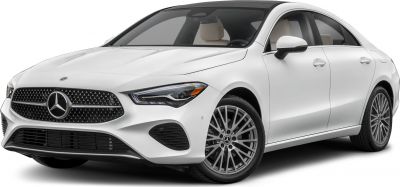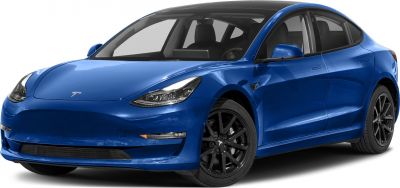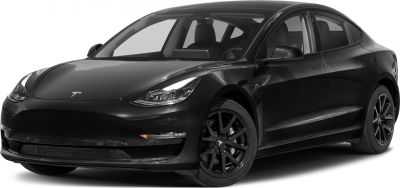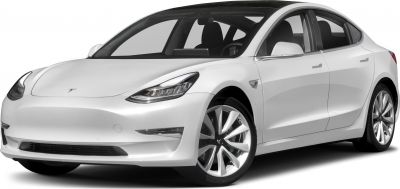 1952 Mercedes-Benz W188 I Coupe Dimensions, Size & Specs
1952 Mercedes-Benz W188 I Coupe Dimensions, Size & SpecsMeasurements of the 1952 Mercedes-Benz W188 I Coupe, engineered for optimal performance and comfort
| Dimensions | |
|---|---|
| Length: | 4730 mm186.2 in15.5 ft |
| Width: | 1910 mm75.2 in6.3 ft |
| Height: | 1510 mm59.4 in5.0 ft |
| Weight Specifications | |
| Curb Weight: | 1740 kg3836 lbs |
| Maximal permitted Weight: | 2000 kg4409 lbs |
The Mercedes-Benz W188 I Coupe, produced from 1951 to 1955 and model year 1952, stands out as an iconic luxury coupe from the early post-war era. This vehicle combines exquisite design with solid engineering that defined Mercedes-Benz's reputation for quality and style during the 1950s. Measuring 4730 mm (186.2 inches) in length, 1910 mm (75.2 inches) in width, and 1510 mm (59.4 inches) in height, the W188 I Coupe presents a balanced and commanding presence on the road. Its dimensions reflect the grandeur and elegance typical of luxury coupes of its time, offering both spaciousness and aerodynamic flow. Weighing in at a curb weight of 1740 kg (3836 lbs), with a maximum permissible weight of 2000 kg (4409 lbs), the car showcases a strong and robust build designed for comfortable cruising. The W188 I series was known for its stunning bodywork and prestigious status, making it a collector's favorite today. This generation of the Mercedes-Benz W188 is a quintessential example of classic automotive craftsmanship, emphasizing luxury, performance, and style in a compact coupe format that remains celebrated more than half a century later.
Discover the standout features that make the 1952 Mercedes-Benz W188 I Coupe a leader in its class
Have a question? Please check our knowledgebase first.
The Mercedes-Benz W188 I Coupe, produced from 1951 to 1955, measures 4730 mm (186.2 inches) in length, 1910 mm (75.2 inches) in width, and 1510 mm (59.4 inches) in height. These dimensions highlight its grand touring coupe stature, blending a sleek and elegant design with a substantial road presence typical of luxury vehicles from the early 1950s.
The W188 I Coupe has a curb weight of 1740 kg (3836 lbs), which indicates the vehicle's weight including standard equipment, fluids, and a full fuel tank but without passengers or cargo. The maximum weight capacity—or gross vehicle weight—is approximately 2000 kg (4409 lbs). This means it can safely carry about 260 kg (573 lbs) of passengers and cargo combined, reflecting its robust build and chassis design for luxury touring.
The W188 I Coupe measures 4.73 meters (15.5 feet) in length and 1.91 meters (6.27 feet) in width. Standard single-car garages typically measure around 6 meters (20 feet) in length and 3 meters (10 feet) in width. Therefore, this coupe comfortably fits within a standard garage slot, offering sufficient clearance for door opening and vehicle maneuvering without difficulty.
The W188 I Coupe succeeded Mercedes-Benz's earlier luxury models like the W186 series. Compared to these, the W188 retained a similar length but introduced a wider and more streamlined body enhancing interior space and style. The W188’s width of 1910 mm (75.2 inches) is relatively broader than many contemporaries, giving it a more imposing road presence. Its height of 1510 mm (59.4 inches) aligns with the coupe design trends of the period, offering a lower, sportier stance compared to the taller sedans of the preceding generation.
In the early 1950s luxury coupe segment, rivals like the Jaguar XK120 and the Ferrari 212 featured sportier, smaller dimensions aimed at performance. The W188 I Coupe stands out for its grand touring appeal, boasting larger overall dimensions—4730 mm in length and a substantial width of 1910 mm—providing enhanced comfort and presence. Mercedes-Benz focused on blending performance with luxury and spaciousness, differentiating it from smaller, more performance-oriented sports coupes.
While exact interior dimensions for the W188 I are less documented, its substantial exterior dimensions—particularly the nearly 1.91 meter width—suggest a spacious cabin by 1950s standards. The coupe design emphasizes luxury and driver/passenger comfort, with ample legroom and headroom for front occupants. The lower height of 1510 mm contributes to a sleek roofline without significantly compromising interior space. Materials and craftsmanship further enhance the comfort, making it a notable grand touring vehicle of its time.
Although specific wheelbase data for the W188 I Coupe can vary slightly by model year and body style, it’s generally reported around 2800-2900 mm (110-114 inches). This relatively long wheelbase contributes to a smooth, stable ride at high speeds, enhancing comfort on long drives. It also improves straight-line stability and helps accommodate the spacious, luxurious interior synonymous with this model.
With a height of 1510 mm (59.4 inches) and a width of 1910 mm (75.2 inches), the Mercedes-Benz W188 I Coupe combines a low roofline with broad shoulders, creating an elegant, aerodynamic silhouette characteristic of classic grand tourers. The relatively low stance reduces air resistance while the wide body enhances stability and road grip. Visually, these proportions add to the car’s timeless, dominant presence on the road, blending style with performance.
The Mercedes-Benz W188 I Coupe is a celebrated post-war luxury vehicle, produced between 1951 and 1955. It was noted for combining advanced engineering—such as the robust inline six-cylinder engines—with exquisite handcrafted bodywork typical of the era. It embodied Mercedes-Benz’s commitment to luxury and performance, integrating a comfortable grand touring experience with cutting-edge technology for its time. The production numbers were limited, enhancing the model’s exclusivity and desirability among collectors today.
The W188 I Coupe, designed as a luxury grand tourer, offers moderate trunk space suitable for weekend travel or light luggage rather than large cargo loads. Its loading capacity reflects its grand touring focus—providing a balance between sleek design and practical storage. The rear space is more generous than typical sports cars of the era but limited compared to larger sedans, reinforcing the model’s priorities toward comfortable passenger space and style over cargo utility.
Discover similar sized cars.

| Production: | 2023-present |
|---|---|
| Model Year: | 2024 |
| Length: | 4688-4701 mm184.6-185.1 in |
| Width: | 1999 mm78.7 in |
| Height: | 1402-1450 mm55.2-57.1 in |

| Production: | 2019-2023 |
|---|---|
| Model Year: | 2019 |
| Length: | 4688 mm184.6 in |
| Width: | 1999 mm78.7 in |
| Height: | 1439-1450 mm56.7-57.1 in |

| Production: | 2023-present |
|---|---|
| Model Year: | 2024 |
| Length: | 4720 mm185.8 in |
| Width: | 2089 mm82.2 in |
| Height: | 1431-1441 mm56.3-56.7 in |

| Production: | 2020-2023 |
|---|---|
| Model Year: | 2021 |
| Length: | 4694 mm184.8 in |
| Width: | 2088 mm82.2 in |
| Height: | 1443 mm56.8 in |

| Production: | 2017-2020 |
|---|---|
| Model Year: | 2017 |
| Length: | 4694 mm184.8 in |
| Width: | 2088 mm82.2 in |
| Height: | 1443 mm56.8 in |
